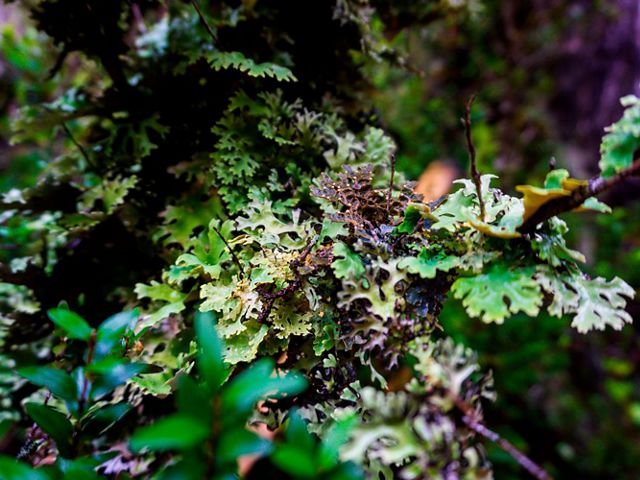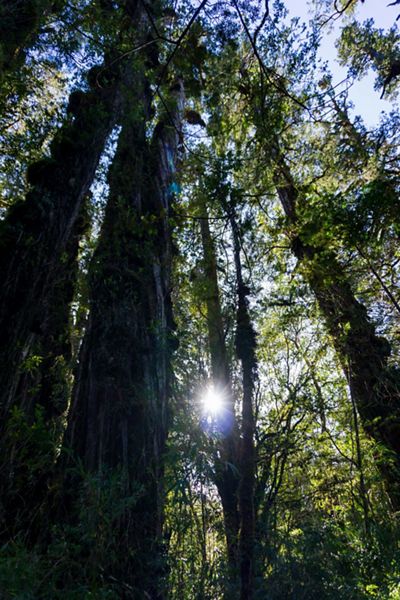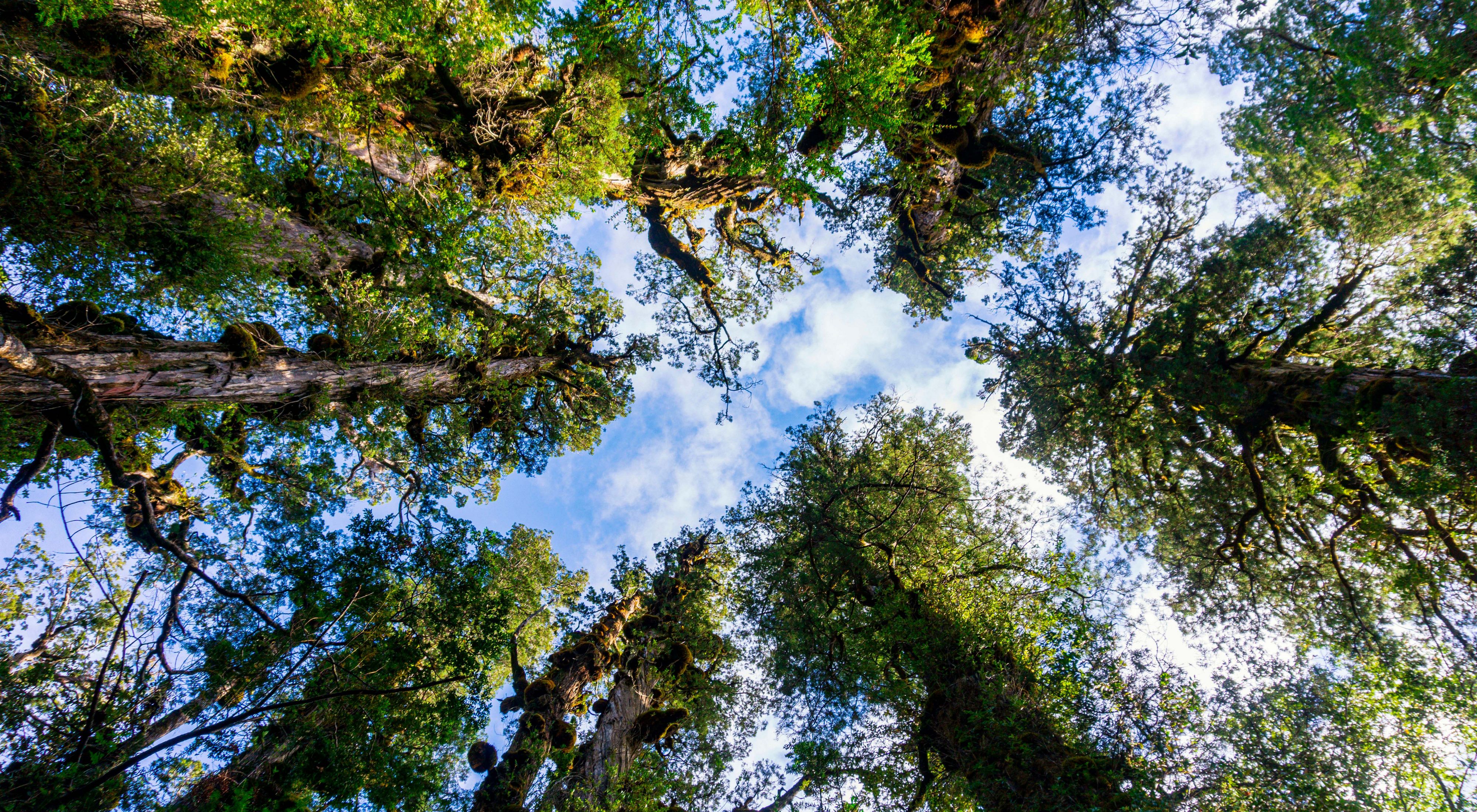Valdivian Coastal Reserve Reopens Its Facilities to Visitors
The administration and visitor center of The Nature Conservancy's conservation project has reopened its doors after almost two years.
Media Contacts
-
Carolina Pino
Communications Specialist
Phone: +56 9 9242 1975
Email: carolina.pino@tnc.org

LOS RÍOS, CHILE—The Valdivian Coastal Reserve (VCR), a conservation project of The Nature Conservancy Chile (TNC Chile) known for its beautiful landscapes, the characteristic flora and fauna of the Valdivian temperate rainforest and the unique sounds of the ancient larch forests, is once again open to the public after a nearly two-year closure.
Why is this reopening important? Even though public roads run through the reserve and the reserve does not restrict access to visitors, who can reach various sectors on their own, the reserve staff and park rangers who work at the visitor center provide valuable services. They introduce visitors to the conservation work carried out in the more than 50,000 hectares of the project, as well as provide safety instructions regarding the state of the roads and reference points in the reserve. There are extensive areas in the VCR where there is no mobile phone service, and mobile apps that display the reserve's roads usually do not provide weather and terrain conditions.
Therefore, starting in September, groups of students and others interested in visiting the VCR will be able to schedule a welcome talk with knowledgeable VCR staff. These talks are offered Monday through Friday from 9 a.m. to 1 p.m. and from 3 p.m. to 5 p.m., as well as on Saturdays from 10 a.m. to 1 p.m. and from 3 p.m. to 5 p.m.; they are not offered on Sundays or holidays. This schedule may change for the summer season. To schedule a welcome talk, email contacto.rcv@tnc.org or use WhatsApp to call +56 9 5634 4564 at least two weeks in advance. Reservations for welcome talks are required, and visitors must be prepared to show their confirmation from TNC Chile.
Visitors who attend a welcome talk must comply with COVID-19 protocols established by TNC Chile, including presenting their mobility pass to enter the facilities and complying with hygiene measures such as wearing a mask that covers their nose and mouth, washing their hands or using hand sanitizer and maintaining physical distance from others.
Quote: Liliana Pezoa
We are happy to be able to reopen the reserve for students, tourists and the general public so they can know and value this protected area.

“We are happy to be able to reopen the reserve for students, tourists and the general public so they can know and value this protected area, and hopefully they will join in our conservation work," says Liliana Pezoa, administrator of the Valdivian Coastal Reserve. "Having access to the visitor center also makes their visit safer, as they will know the precautions they must take before embarking on a walk or tour, as well as the state of the roads."
The administration and visitor center is located at the entrance to the VCR—coming from Chaihuín, turn left after the bridge; the entrance is 24 km. from Corral.

Los Alerces Trail
Visitors who wish to hike the Los Alerces Trail must make a reservation with local guides at least two days in advance. Access to the trail is only possible with the company of a guide in 4x4 vehicles. For more information, contact José Antillanca at +56 9 8430 6811.
About the Valdivian Coastal Reserve
The Valdivian Coastal Reserve (VCR) is a private protected area, with public access, located in Corral and La Unión, in the Los Ríos region, Chile. Using science, local knowledge, innovation and a collaborative approach, TNC is working to conserve and restore the native forest, the coastline and the unique biodiversity of the reserve, as well as to maintain the archaeological and cultural heritage of the area, in close partnership with local communities. The VCR covers approximately 50,000 hectares.
Established in 2003, the VCR is one of the last relatively intact fragments of Valdivian temperate rainforest along the Cordillera de la Costa. Ninety-one percent of the VCR territory is still covered by original Valdivian temperate rainforest vegetation. TNC works to protect and conserve the rich and unique ecosystems of the reserve, which include olivillos, an endemic tree that can live as long as 400 years, and extensive areas of larch trees, which can live as long as 4,000 years. The reserve provides habitat for a large number of endemic plants and amphibians and is also home to a significant population of pudú. Sightings of Darwin's foxes, an endangered species, have been recorded, thanks to camera traps installed in various parts of the reserve. TNC's park rangers and conservation teams, working with science and in collaboration with local communities, continuously seek the most efficient ways to care for, protect and improve the health of the ecosystems within the reserve, including the temperate forest, rivers and other bodies of water, the coastline and coastal dunes.
Visit the VCR's Facebook and Instagram pages to learn about news and activities within the community.
Read more about the Valdivian Coastal Reserve
The Nature Conservancy is a global conservation organization dedicated to conserving the lands and waters on which all life depends. Guided by science, we create innovative, on-the-ground solutions to our world’s toughest challenges so that nature and people can thrive together. We are tackling climate change, conserving lands, waters and oceans at an unprecedented scale, providing food and water sustainably and helping make cities more sustainable. The Nature Conservancy is working to make a lasting difference around the world in 77 countries and territories (41 by direct conservation impact and 36 through partners) through a collaborative approach that engages local communities, governments, the private sector, and other partners. To learn more, visit nature.org or follow @nature_press on X.
